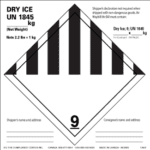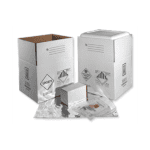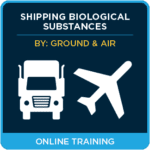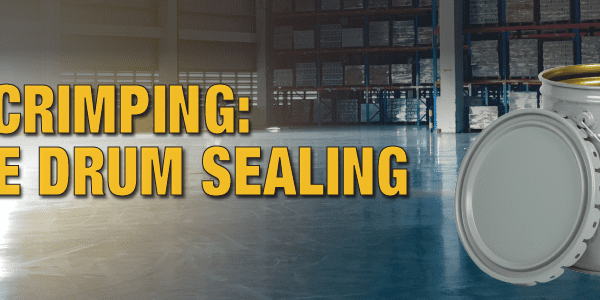Halloween is just around the corner. Trick or treating will be different this year due to COVID-19, but at least in my town, it is expected to still take place. One of the pleasures of walking around with the kids is not only enjoying the various creative costumes, but also the spooky, scary, haunted decorations that many folks set up.
Smoke/fog machines add to the ambiance of a haunted house. These machines use dry ice and water to generate the desired “smoke/fog effect”. How does this story relate to dangerous goods you ask? I’ll tell you.
Dry ice is frozen carbon dioxide. Carbon dioxide gas is always present in the environment, but in low concentrations. Dry ice is usually used for keeping something frozen for prolonged periods of time. Its temperature is -78.5°C or -109.3°F. Dry ice is generally safe to handle, with appropriate insulated gloves.
The danger comes into play when you ship it. By ground in the USA and Canada, dry ice is not regulated, but by air, it is. Dry ice is transported as a Hazard Class 9. It is considered a simple asphyxiant by WHMIS and OSHA.
Part 173.140 of the 49 CFR regulations define a Miscellaneous Class 9 as a material which presents a hazard during transportation but which does not meet the definition of any other hazard class. Since simple does not meet any other hazard class, it falls into Class 9.
When shipping dry ice by air, you must have the class 9 label, the net weight of the dry ice, as well as the to/from address. Ensure that your product is packaged in a manner that once the dry ice sublimes (evaporates), the product remains secure. Ensure you allow enough dry ice to last the duration of the shipment, plus a little more in case of delays.
Getting back to the smoke/fog machine, ensure that when you pick up the dry ice, it is kept in a well–ventilated area. This is extremely important due to the asphyxiant nature of the product.
A simple asphyxiant means a substance or mixture that displaces oxygen in the ambient atmosphere, and thus causes oxygen deprivation in those who are exposed, leading to unconsciousness and death.
New York State offers great advice on handling dry ice. You can find the information by visiting https://www.health.ny.gov/publications/7081/index.htm
ICC Compliance Center offers online training courses, as well as labels to ship your dry ice shipments safely and in compliance. If you are using dry ice at home, take the necessary precautions to ensure your activity is done safely for all to enjoy.
We have all the products, services and training you need to ensure your staff is properly trained and informed.
 Dry Ice, 6″ x 6″ Gloss Paper, Blank |
 Category A/B Specimen Shipper (Gel or Dry Ice) |
 Shipping Biological Substances & Dry Ice by Ground (49 CFR) and Air |






